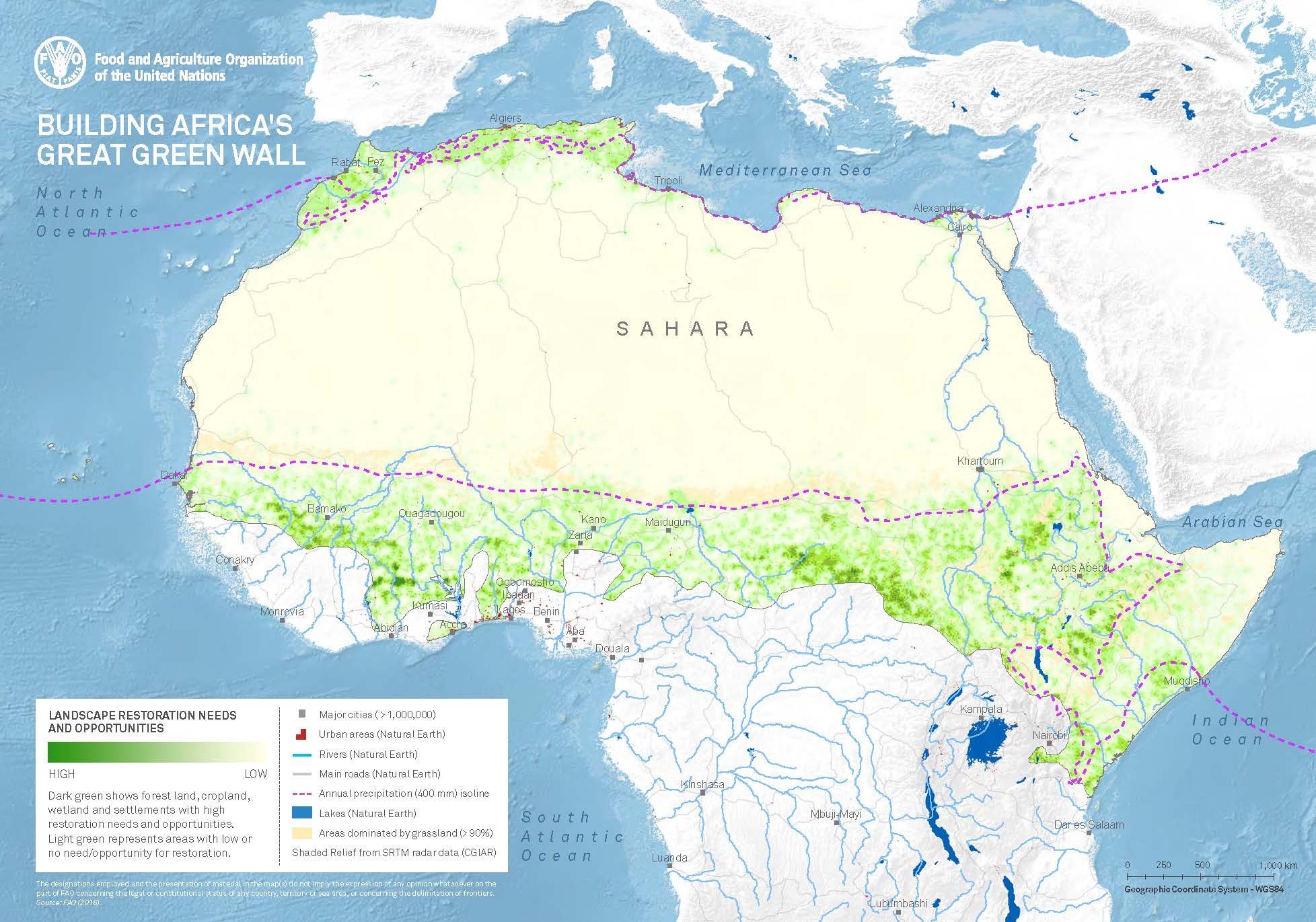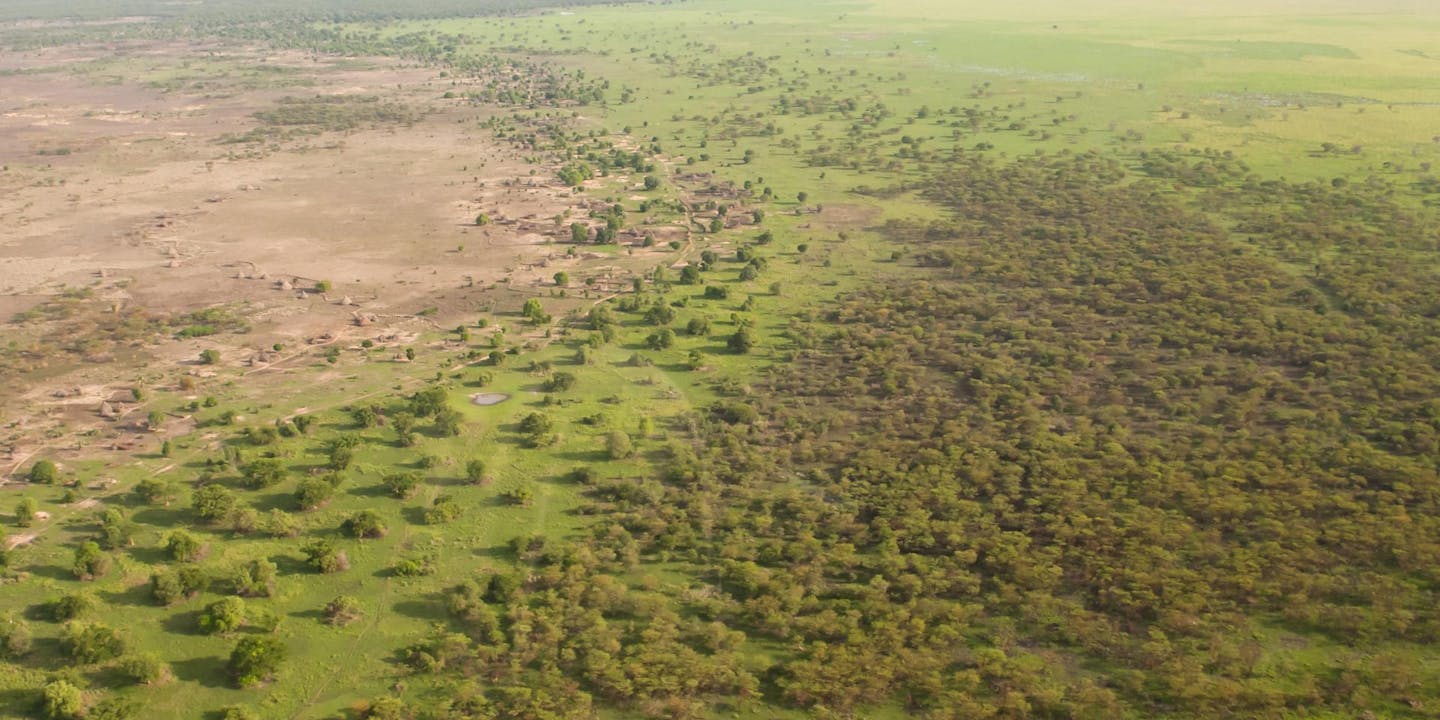A line in the sand: Great Green Wall Initiative
- Nature Conservation
- Ecosystem Restoration
- Forests
- Deserts & Semi Deserts
- Sustainable Livelihoods
- Community Action
- Plants
- Sub-Saharan Afrotropics
- Afrotropics Realm
In 2007, the African Union, which consists of 55 member states, launched The Great Green Wall Initiative. When complete, it will be an 8,000 km long, 15 km wide mosaic of trees, grasslands, vegetation, and plants—the largest living structure on the planet, three times the size of the Great Barrier Reef. Designed to transform the lives of millions of people, the GGW is an African-led initiative to restore degraded lands and help the region's inhabitants by creating jobs, generating income, and promoting peace.
The wall will expand across Burkina Faso, Chad, Djibouti, Eritrea, Ethiopia, Mali, Mauritania, Niger, Nigeria, Senegal, and Sudan. These eleven countries plan to grow vegetation, food security, and climate resilience in a region where temperatures rise faster than almost anywhere else.

Credit: Food and Agriculture Organizations of the United Nations.
"Desertification is the greatest environmental challenge of our time" and "a threat to global wellbeing," according to the UN's top drylands official, Luc Gnacadja. It is a type of land degradation, specifically in drylands, in which biological productivity is lost due to natural processes or human activity. As the desert gets hotter, fertile and semi-fertile areas nearby become increasingly arid.
Drylands are these semi-fertile areas; they cover 38% of the Earth and are home to 2.7 billion people. They encompass Australia, the Middle East, Central Asia, western North America, and much of North Africa as drylands neighbor the world's largest subtropical desert, the Sahara, to the south, coast to coast across the continent.
South of where the iconic golden waves of this desert lie against a bright blue sky is the Sahel. This is where the ecoclimatic and biogeographic transition occurs between Sahara sand and the Sudanian savanna. It is one of the poorest regions in the world and extremely susceptible to drought. Between June and August 2010, Niger's crops failed to mature in the heat, 350,000 Nigerians faced starvation, and 1,200,000 were at risk of famine.
As global temperatures continue to rise and more water evaporates from the region, the Sahara sands have been creeping further into the Sahel. This desertification seems to promise inevitable destruction, but those who live there are taking action utilizing solutions that nature already provides -- by building the Great Green Wall.
By 2030, the GGW Initiative plans to restore 100 million hectares of degraded land, remove 250 million tons of carbon, and create 10 million green jobs. So far, over 25 million hectares of land have been renewed, 26.4 million trees have been planted, and 20,000 jobs have been created. Twenty African countries have mobilized and pledged support, bringing together eight billion dollars to transform their communities, continent, and, ultimately, the world.
"It's not just about planting trees," Inna Modja says in the upcoming documentary The Great Green Wall, "it has to become a movement." The film follows the renowned Malian singer across the Sahel to those on the front lines of the GGW Initiative, planting trees, transforming their lands, and hoping to revitalize where they call home.



